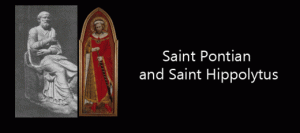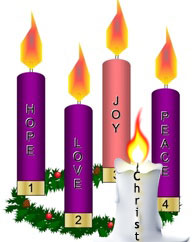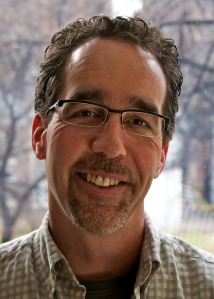
For years now, Jeanette as had a really cool mobile app (cool that is to an eccentric at times and eclectic at all times Catholic history nerd like me) for her Apple iPhone called Saint of the Day, which is a product of Franciscan Media in Cincinnati, Ohio, which was started by the Franciscan Friars in 1893 with St. Anthony Messenger magazine.
Back around about 2010 or 2011 probably when I convinced Jeanette, an Anglican, to purchase the app for $2.99, or something like that at the time, I assured her it would be a worthwhile investment. This was at a time when free apps were starting to flood the market (the first generation iPhones had been introduced by Apple in the American market only several years earlier on June 29, 2007, and Jeanette purchased an iPhone 4 in June 2010, the same month they were released.)
Jeanette noted it was easy for me, the Catholic, to say, as it wasn’t my $2.99 being shelled out, as I didn’t even have a smartphone. At the risk of digressing – I do now, namely Jeanette’s old iPhone4, which would have been her new one back then – but it is not connected to my MTS telephone or Shaw Internet network providers now, so I can’t use it to listen to Saint of the Day, but I do use the old smartphone some, mainly for its camera and calculator applications, less frequently as a voice recorder, and rarely as a Big Ben alarm chime wake-up.
In any event, digression aside, I think history as proved that at least on this occasion, I spent someone else’s money well, and the Saint of the Day app, upgraded at least once over the last six years, if not more often, and has proven itself to be a sound $2.99 investment.
The Saint of the Day for Aug. 13 is Saint Hippolytus, the only person to make the journey from being an antipope to canonized saint.
Antipopes are pretenders to the Chair of Peter, who set themselves up in opposition to the legitimately canonically elected pontiff, frequently exercising pontifical functions in defiance of the legitimate occupant heading the Holy See. Sound pretty straight forward? No so much. Take Pope Gregory XII, who resigned at the request of the Council of Constance on July 4, 1415 to help end the Great Western Schism, and until Pope-emeritus Benedict XVI announced his resignation Feb. 11, 2013, had been the last pope to resign some 600 years ago. The schism had actually begun some 37 years earlier in 1378, and over the course of the next three and more decades, saw two papal claimants, and later three, vying for supremacy over the medieval church in a papal dance that stretched from Avignon in France to Rome in Italy, and eventually saw the not only Pope Gregory XII resign, but also two papal impostors, the contenders, Antipope Benedict XIII and Antipope John XXIII (not to be confused, of course, with St. John XXIII, who was pope from 1958 to 1963), paving the way for Pope Martin V in 1417, the first pope in almost 40 years to be able to command the allegiance of the whole Latin Church.
Cardinal Joseph Hergenröther, the first cardinal-prefect of the Vatican Archives, has enumerated a total of 30 antipopes between Antipope Hippolytus in 217 and Antipope Felix V, whose regnal name was Amadeus of Savoy, and was the last of the papal schismatics, whose pretension to the Chair of Peter ended in 1449. Hippolytus was a brilliant theologian and is considered a Church Father. He wrote treatises against several of the heresies afflicting the Church in the late second and early third centuries – most of them Trinitarian or Christological – “as early Christians sometimes struggled to discern the correct terminology to apply to the apostolic teaching that Jesus was true God and true man,” notes Steve Weidenkopf, a lecturer of church history at the Notre Dame Graduate School of Christendom College in Alexandria, Virginia, in the bog Catholic Answers (http://www.catholic.com/blog/steve-weidenkopf/the-antipope-who-became-a-saint).
In particular, Hippolytus was frustrated by Pope Zephyrinus’ slowness to “make a quick and authoritative decision concerning the heresy known as Modalism,” Weidenkopf writes. Modalism, known also as Monarchianism and Sabellianism, blurred the distinctions between Father, Son, and Holy Spirit, positing that these were just different modes of one divine person. To a Modalist, God the Father appeared on earth in the mode of Jesus Christ, God the Son. When Pope Callistus I succeeded Pope Zephyrinus in 217 and showed no more inclination than his predecessor in dispatching the Modalism heresy, Hippolytus was so angered he claimed Callistus was unworthy of the office due to his checkered past, when as a young slave, some believed, he had embezzled his master’s money, Hippolytus gathered a group of followers who elected him pope. In so doing Hippolytus, opened the door to the concept of the antipope, which reached its height during the Great Western Schism of 14th century. As for Modalism, it would eventually be declared a heresy by Pope St. Dionysius circa 262.
Hippolytus’ schism lasted for 19 years, Weidenkopf says, “and through three pontificates. “As a rigorist who did not believe that serious sinners should be re-admitted to communion in the Church,” Hippolytus also refused to accept the more-merciful approach of Pope Callistus I and his successors.
However, when Maximinus Thrax, also known as Maximinus I, became Roman Emperor in 235, he resumed persecution of Christians, particularly clergy, and both Antipope Hippolytus, and Pope Pontian, who had also been elected in 230, were arrested and sent to the mines on the island of Sardinia.
Amidst the suffering and hardship of the mines, Hippolytus renounced his schism and papal claim and was reconciled to the Church by Pontian.
Both men later succumbed to the harsh conditions, and their remains were transported for burial in Rome, where they were recognized as martyrs and saints of the Church.
And if you happened to guess today is also the memorial of Saint Pontian, you guessed right.
So the Roman Catholic Church’s Saint of the Day for Aug. 13 is actually saints plural: Saints Pontian and Hippolytus.
You can also follow me on Twitter at: https://twitter.com/jwbarker22
55.743755
-97.846248


 The first candle of Advent, lit around the world yesterday, symbolizes hope. It is sometimes called the “Prophets’ Candle” or “Prophecy Candle” in remembrance of the prophets, especially Isaiah, who foretold the birth of Christ. It represents the expectation felt in anticipation of the coming Messiah.
The first candle of Advent, lit around the world yesterday, symbolizes hope. It is sometimes called the “Prophets’ Candle” or “Prophecy Candle” in remembrance of the prophets, especially Isaiah, who foretold the birth of Christ. It represents the expectation felt in anticipation of the coming Messiah.



